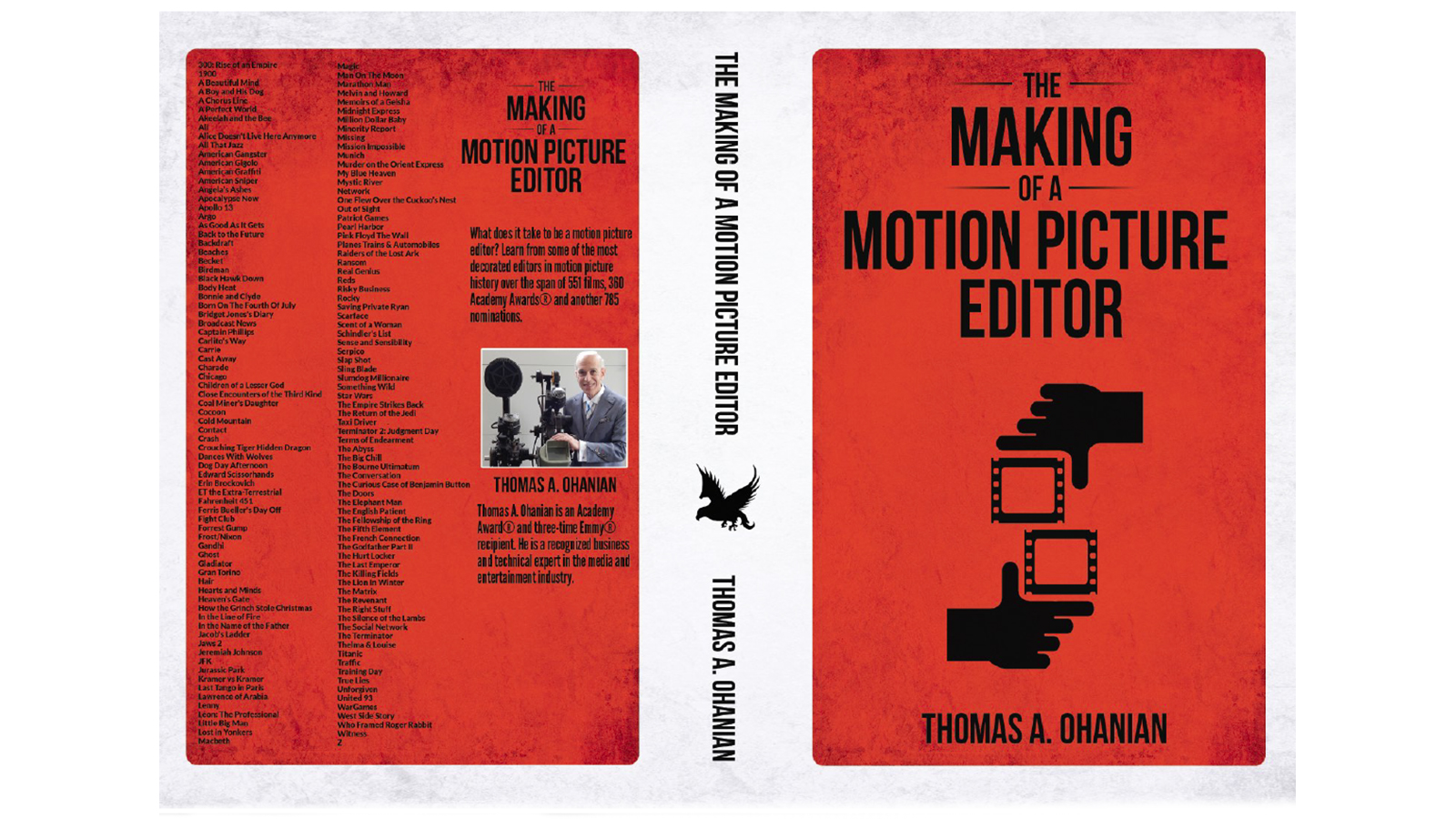Is there a bible of film editing? Some would cite Walter Murch’s influential In the Blink of an Eye as a crucial text. Others point to Ralph Rosenblum’s classic When the Shooting Stops … the Cutting Begins. Theorists and film students may send you all the way back to Sergei Eisenstein’s Film Form or André Bazin’s What Is Cinema, or any number of academic tomes published in the decades since. This year, there’s a new contender — Thomas A. Ohanian’s excellent interview collection The Making of a Motion Picture Editor.
Ohanian, well known as only the eighth employee of Avid Technology, is a filmmaker, designer and inventor who’s won an Academy Award and three Emmys for his work on Avid Media Composer and related technology. He’s also written or co-authored textbooks: Digital Nonlinear Editing and Digital Filmmaking. His passion for the art of film editing is evident in the scope of his endeavor: his book features interviews with more than 50 editors. In the introduction, he calculates that those editors were involved with films that won 360 Academy Awards — and an additional 785 nominations. That’s a lot of accolades. And they’re not brief interviews. Well over 500 pages in length, an average of about 10 pages is devoted to each subject, giving them space to consider their careers, call out some of their favorite work from their peers in the industry, and, often, tell some really good stories. The result is an unlikely page-turner — finishing each interview made me eager to move on to the next, hungry for the next nugget of information about the creative or practical considerations behind another of my favorite films.
As you’d expect from a book that covers so many Academy Award winners, The Making of a Motion Picture Editor is concentrated in large part on film editors working on fairly big-budget Hollywood cinema from the 1960s to the present day, and many of the most famous names in the business are well represented. (The great Dede Allen, ACE, declined to be interviewed, but is represented here by the letter she wrote in response to Ohanian’s request, in which she rightly notes her achievement as the first film editor to secure a credit at the head of a film, for her breathtaking work on Bonnie and Clyde.) Still, Ohanian also makes room to highlight some less familiar names, such as Sylvie Landra, who edited Léon (aka The Professional), the first European feature cut on the nonlinear Avid Media Composer.
Ohanian’s mileage varies, as different subjects have different conversational styles, but there are clear throughlines in his questioning. Consistently, he illustrates the acute concern editors have with story and character above all else. He gets Marcia Lucas on record defending what she describes as the five different endings that constitute the climax and denouement of Taxi Driver. Paul Hirsch, ACE, remembers something he learned from legendary film composer Bernard Herrmann — that the best film music functions as an expression of a character’s psychology, as well as an accompaniment to on-screen action. And Tim Squyres, ACE, volunteers that the much-lauded martial-arts action in Crouching Tiger, Hidden Dragon, which earned him his first Oscar nomination, was the easy part of that film, compared to the relatively calm dialogue scenes.
There is plenty on aesthetics, too — like Pietro Scalia, ACE, vividly describing the layers of JFK‘s sound mix, Jerry Greenberg, ACE, explaining how multiple cameras running at multiple speeds helped stretch or compress time on The Untouchables, or Kirk Baxter, ACE, delivering awestruck descriptions of signature moments from Thelma Schoonmaker’s work with Martin Scorsese in After Hours, The Color of Money, Goodfellas and Kundun. And Steven Spielberg’s longtime collaborator, Michael Kahn, ACE, observes how the expectations of a younger generation of directors helped change cutting styles in the 1960s and 1970s, elevating the editor to a more important creative position.
My only significant complaint about this package is that it’s missing an alphabetical index that would have helped readers quickly find relevant information about a given film more quickly, especially if their familiarity with behind-the-scenes credits is less than encyclopedic. Nonetheless, The Making of a Motion Picture Editor is a compelling read for anyone interested in the art and craft of filmmaking and a great gift for anyone who makes a living editing film or interacting with film editors. A few anecdotes even serve to strip some mystique from the cutting room, like a story from Alan Heim, ACE, about being asked by director Sidney Pollack to roughly chop three and a half minutes from the middle of a scene, which resulted in a jarring edit across the 180-degree line. When Heim expressed concern, Pollack said, “Alan, don’t worry about it. It’s a projectionist error!” Having told that story, Heim marvels, “You can get away with a lot of stuff when you’re editing a movie.”










